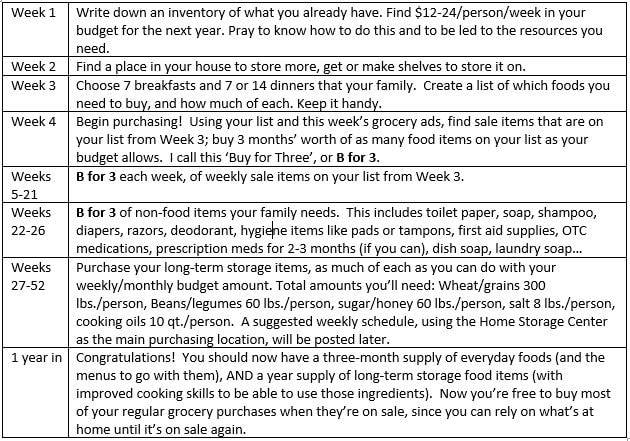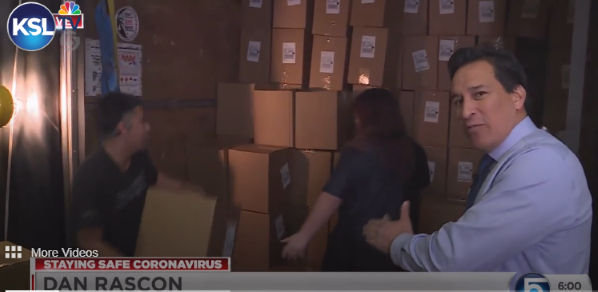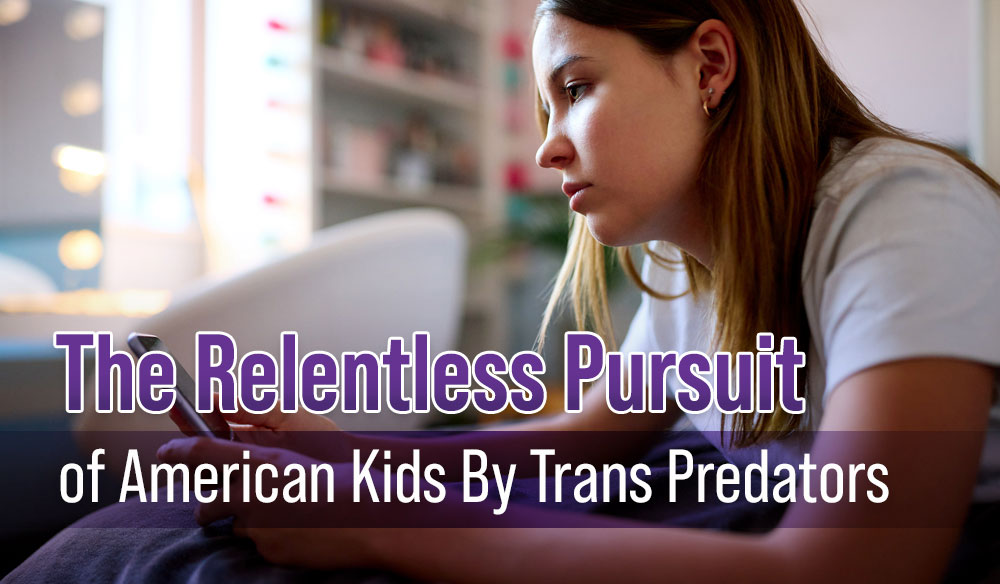Home Reliance


Are You Prepared?
As Covid-19 soared to unprecedented measures closing schools and even entire states, a bit of panic set in. Families flooded to stores grabbing everything they thought they would need, quickly realizing the items they wanted weren’t there. We received a constant flow of emails from moms asking us what they should do, what they should buy, what they should store and how to start. We created this section of our website to help you turn panic into power, chaos into calm and uncertainty into independence. We are going to help you prepare with confidence!
Founding Principles of Home Reliance
The principles of preparation are rooted in the founding principles of America–Self-reliance, Work, and Serving Each Other. Those are the principles of what we call “Home Reliance.” In our fast past world we have become so accustomed to having everything we need when we need it, we have no idea what to do when it isn’t there. Covid-19 has been a great wake-up call for the entire country. It is a real-life example in real time, of how such an unexpected event can disrupt our lives. We’ve compiled a list of some great websites with information on how to prepare for various emergency situations from short-term to long-term planning. You can VIEW THEM HERE
We encourage families to have a short-term plan which includes a 72 Hour Kit (also known as a “bug-out bag”) and a three month home storage to help you achieve the peace of self-reliance. Whether natural disaster, national emergency or worldwide health crisis–being prepared for the unexpected will help you weather any storm with grace and confidence.
Where to Begin
The best place to begin is right where you are. Instead of running to the store in a panic, take a moment to sit down and make a list of what you already have. Then you’ll know what you really need. When you do go to the store, make a list of those items that are flying off the shelves. That will help you determine how much to buy and stock up on when the shelves are restocked. Right now people are shopping in a frenzy based on uncertainty and fear. Our goal is to help you become a thoughtful planner so you can be confident in your choices and purposeful in your preparations.
Start Small and Simple
FOOD – a 3-month supply of things you eat every day, and a year’s worth of foods that store well for a long time. The 3-month supply will be used on a daily or weekly basis; the long-term foods can be used any time. Once you get your 3-month supply, you’re more than halfway done; a year of long-term basic foods are cheaper and simpler to get. These are the kinds of things that fly off the shelves in times of trouble–canned goods, whole grains, dried beans, etc. (Note: you will need to learn to cook with these items so start gathering recipes online. “Cookin with Home Storage” is a great book to get you started. It’s a valuable addition to have on hand in your home storage.)
WATER – at least a two week’s supply. A gallon per person, per day, is the minimum. That’s fourteen gallons per person, as a starting number. 2-liter pop bottles and plastic 2-quart juice containers are great for storing water. Just make sure they are thoroughly washed out before filling them with water. These size bottles are also great for storing under the sinks in your home – which is great if the water has to be shut off for a time. Sinks are exactly where you’ll want to have containers you can easily pour. Bigger water storage containers may be kept in the basement, the garage, or in a protected area outside. You can visit our RESOURCES PAGE for water storage options. And here’s a great link on how to store water long-term.
FINANCIAL RESERVE – This will likely take a few forms – immediate, short and long term. You will want to have some cash on hand, in small bills, in the event of short-term emergencies like widespread power outages. Another type of reserve is a personal emergency fund. A thousand dollars, sitting in a safe or accessible account, will be enough to deal with most emergencies. A third kind of reserve is to have enough savings to cover bills for at least 3-6 months. A year is even better.
MEDICINE & SPECIALTY ITEMS – This is something most people don’t consider. Items in this category would include a general first-aid kit, medication, toilet paper, tampons, diapers, deodorant –whatever your family specifically needs and uses on a daily basis. Toilet paper was one of the first things to fly off the shelves which just proves that the wealthiest people in the “end of days” will be those with a hefty stock of tampons and toilet paper.
DOWNLOAD a sample THREE MONTH STORAGE PLAN
GET STARTED…
DAY 1
Make a list of what you have on hand and a second list of items you frequently eat or use. Compare the lists to see what you have on hand and what you need to buy right now to carry you through the next few days. Create a shopping list and go to the store to purchase the items on your list.
Day 2
Make a list of meals you and your family like to eat–7 breakfasts and 14 dinners. Based on these meals, create a 2 week menu and make a list of items you need to buy to make those meals. Remember to check the items you already have in stock when creating your shopping list.
Day 3
Go Shopping! Buy the items on your list. You are now set for 2 weeks!
Day 4
Find a place in your house to store more food and pantry items, and/or make shelves to store the items. You can totally get creative with this. There is a lot of wasted space in most houses. Can goods can easily fit under a bed and you can use a shallow box to put them in for easy access. Home Storage Solutions Blog has some GREAT ideas on how to store and track your home storage items.
Day 5
Using your menu and list of frequently used items, check sale ads and store bargains so you can purchase items in bulk when they are on sale. Another great way to build your home storage is to buy 1 or 2 cases of a food item or pantry items each time you do your regular shopping. These items might be a case of tomato sauce, box of canned vegetables or extra packages of toilet paper. Aldi is a great place to stock up on these items at a great price.
Day 6
Make a list of toiletries, medications and personal items your family uses on a regular basis. Add these items to your master food list. Home Storage Solutions is a great blog with several helpful list forms you can download free. Printable Pantry List is very helpful for tracking what you have to determine what you need. Here some additional helpful list forms and blog posts.
Food Storage Cheat Sheet – a great list of pantry, frig and freezer items and how long you can safely store them.
Eating from Your Pantry and Storage – this is another GREAT resource from Home Storage Solutions on how to maximize what you already have and build what you know you’ll eat.
Grocery List – this is a great print out, divided by section the most stores are organized.
Menu Planner – You will be amazing at how much more organized you are, how much money you save and much less stress you feel about dinner when you have a menu plan. Here are simple forms you can use. 1 Week Menu Planner 2 Week Menu Planner
There are many others on Pinterest you can check out to find what works best for you.
Day 7
Go Shopping! – Using your lists, and sale ads, create a two week menu and shopping list. Go shopping for the items and bring them to your new home storage area.
You are now Home Reliant for 4 weeks!
How fantastic is that! To continue building your 3 month supply, just repeat the steps you already followed. You can also use the chart below created by Rhonda Hair (AKA, The Provident Homemaker) Now you can be the calm in any storm, reassuring your children that no matter what, you’re going to be okay!
Record-breaking shipments of emergency preparedness items are flying off the shelf for one local business amid growing COVID-19 concerns.










